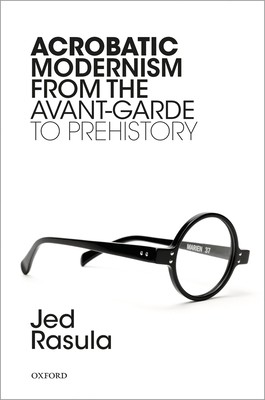
- We will send in 10–14 business days.
- Author: Jed Rasula
- Publisher: Oxford University Press, USA
- ISBN-10: 0198833946
- ISBN-13: 9780198833949
- Format: 15.8 x 23.6 x 3.6 cm, kieti viršeliai
- Language: English
- SAVE -10% with code: EXTRA
Acrobatic Modernism from the Avant-Garde to Prehistory (e-book) (used book) | bookbook.eu
Reviews
Description
This is a book about artistic modernism contending with the historical transfigurations of modernity. As a conscientious engagement with modernity's restructuring of the lifeworld, the modernist avant-garde raised the stakes of this engagement to programmatic explicitness. But even beyond the vanguard, the global phenomenon of jazz combined somatic assault with sensory tutelage. Jazz, like the new technologies of modernity, re-calibrated sensory ratios. The criterion of the new as self-making also extended to names: pseudonyms and heteronyms. The protocols of modernism solicited a pragmatic arousal of bodily sensation as artistic resource, validating an acrobatic sensibility ranging from slapstick and laughter to the pathos of bereavement. Expressivity trumped representation. The artwork was a diagram of perception, not a mimetic rendering. For artists, the historical pressures of altered perception provoked new models, and Ezra Pound's slogan 'Make It New' became the generic
rallying cry of renovation.
EXTRA 10 % discount with code: EXTRA
The promotion ends in 21d.23:35:02
The discount code is valid when purchasing from 10 €. Discounts do not stack.
- Author: Jed Rasula
- Publisher: Oxford University Press, USA
- ISBN-10: 0198833946
- ISBN-13: 9780198833949
- Format: 15.8 x 23.6 x 3.6 cm, kieti viršeliai
- Language: English English
This is a book about artistic modernism contending with the historical transfigurations of modernity. As a conscientious engagement with modernity's restructuring of the lifeworld, the modernist avant-garde raised the stakes of this engagement to programmatic explicitness. But even beyond the vanguard, the global phenomenon of jazz combined somatic assault with sensory tutelage. Jazz, like the new technologies of modernity, re-calibrated sensory ratios. The criterion of the new as self-making also extended to names: pseudonyms and heteronyms. The protocols of modernism solicited a pragmatic arousal of bodily sensation as artistic resource, validating an acrobatic sensibility ranging from slapstick and laughter to the pathos of bereavement. Expressivity trumped representation. The artwork was a diagram of perception, not a mimetic rendering. For artists, the historical pressures of altered perception provoked new models, and Ezra Pound's slogan 'Make It New' became the generic
rallying cry of renovation.


Reviews